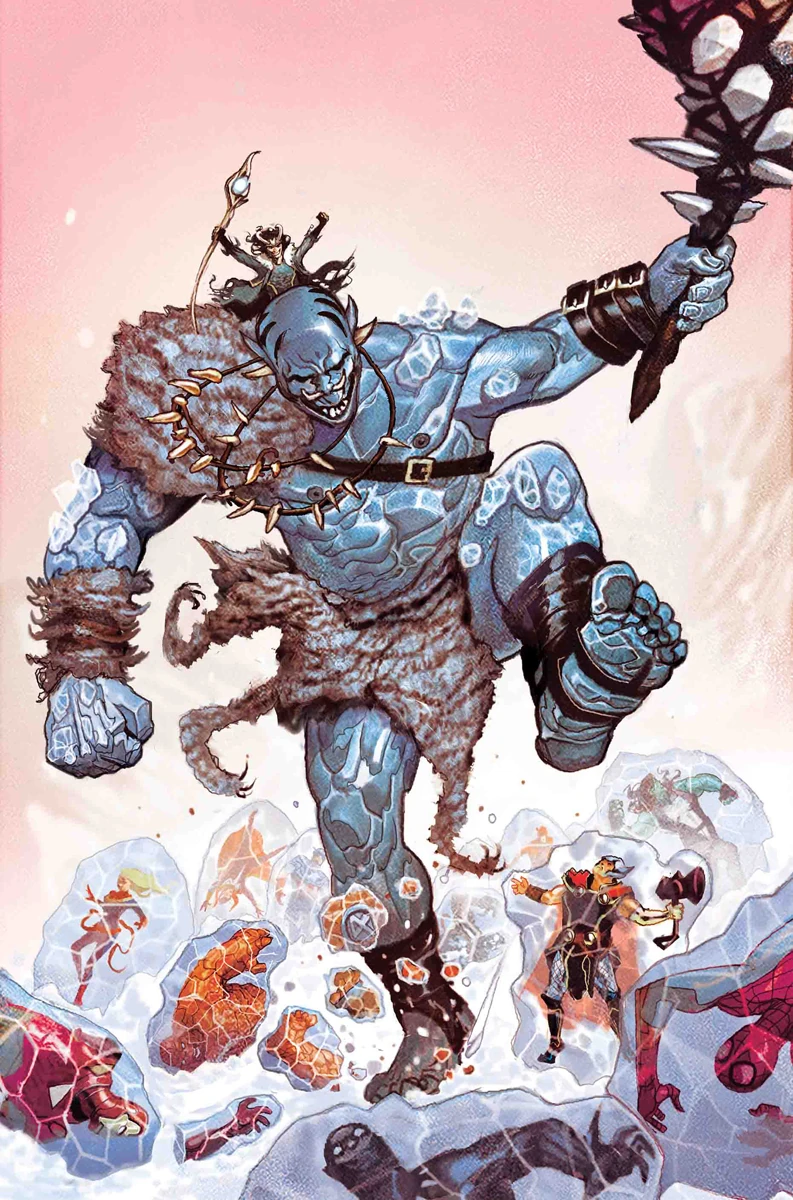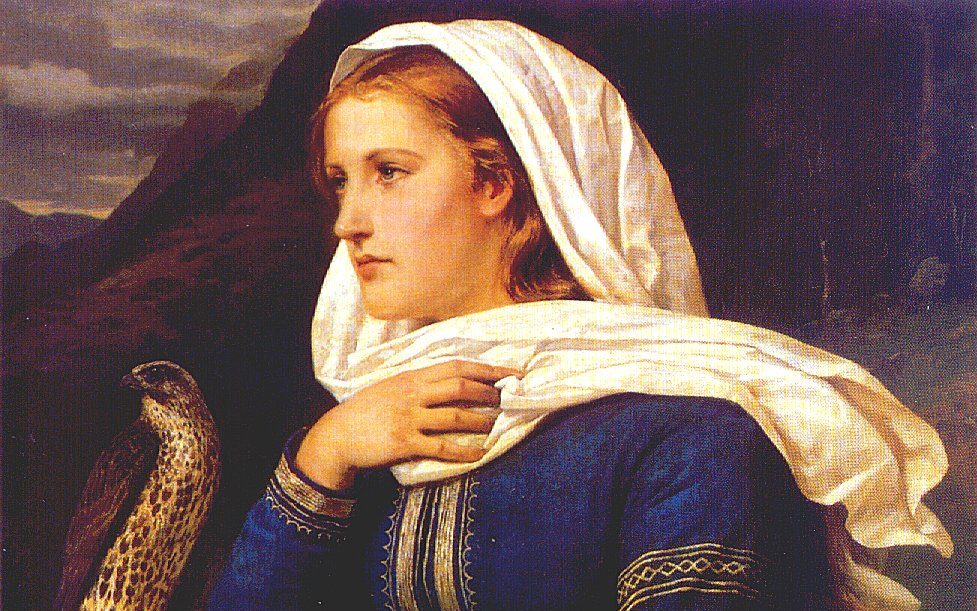When you dive into the world of Norse mythology, Laufey is a name that sparks curiosity and fascination. This enigmatic figure plays a crucial role in shaping the legends of Asgard and Midgard. Who exactly is Laufey? Well, buckle up because we’re about to uncover the secrets behind this legendary character. From their origins to their influence on Norse tales, this article will take you on a journey through the mythological tapestry of Laufey’s world. And trust me, it’s gonna be wild!
Before we get into the nitty-gritty, let’s set the stage. Norse mythology isn’t just about Thor and Odin; it’s a rich tapestry of gods, giants, and mortals. Laufey stands out as a key figure, particularly in the lore surrounding Loki, one of the most intriguing characters in Norse tales. So, whether you’re a mythology buff or just curious about the origins of these ancient stories, you’re in for a treat.
Now, why does Laufey matter? Well, Laufey’s role in mythology isn’t just a side note. It’s a cornerstone of understanding the complex relationships between gods and giants. Their story adds depth to the tales of Loki, offering a new perspective on the dynamics of Norse society. So, without further ado, let’s jump into the heart of the matter and explore who Laufey really is.
Read also:Bane Dark Knight Rises Actor The Man Behind The Mask
Laufey’s Origins: Unveiling the Roots of a Mythological Giant
So, where does Laufey come from? In Norse mythology, Laufey is often linked to the realm of the giants, specifically the Jotnar. These creatures, known for their immense strength and wisdom, play a pivotal role in shaping the world of gods and mortals alike. Laufey’s origins are steeped in mystery, with some texts suggesting they may have been born under the shadows of Yggdrasil, the World Tree.
Interestingly, Laufey’s name itself holds significance. Derived from Old Norse, it translates to “leafy island” or “tree island,” symbolizing growth and resilience. This connection to nature adds an intriguing layer to their character, setting them apart from other giants who are often portrayed as destructive forces. Let’s break it down:
- Laufey is considered a giant, but their role in Norse tales is more nuanced than other Jotnar.
- They are often associated with Loki, one of the most complex figures in Norse mythology.
- Laufey’s origins are tied to the natural world, symbolizing a balance between chaos and harmony.
Laufey’s Connection to Loki: The Mother of Mischief
One of the most fascinating aspects of Laufey’s story is their connection to Loki. In many texts, Laufey is referred to as Loki’s mother, though some interpretations suggest they might be his adoptive mother. This relationship adds depth to Loki’s character, offering insights into his dual nature as both a trickster and a force for change.
Now, here’s the kicker: Loki’s dual heritage—part giant, part god—makes him a bridge between the realms. And Laufey plays a crucial role in this dynamic. Their influence on Loki’s upbringing and worldview cannot be overstated. Let’s explore this further:
- Laufey’s influence on Loki is evident in his ability to navigate the worlds of gods and giants.
- Her teachings may have shaped Loki’s cunning and adaptability, traits that define his character.
- Their relationship highlights the complexity of family ties in Norse mythology.
Laufey’s Role in Norse Society: More Than Just a Giant
While Laufey is often overshadowed by more prominent figures like Odin and Thor, her role in Norse society is significant. As a giant, she represents a bridge between the natural world and the divine. Her presence in the myths challenges the traditional dichotomy of gods versus giants, offering a more nuanced view of the Norse cosmos.
Laufey’s Symbolism: Nature, Balance, and Power
Laufey’s symbolism extends beyond her role as a mother. She embodies the natural world, representing growth, resilience, and balance. In a world often dominated by chaos and conflict, Laufey’s presence serves as a reminder of the importance of harmony and understanding.
Read also:Damian Hardung The Rising Star Whorsquos Turning Heads
Here are some key symbols associated with Laufey:
- Yggdrasil: The World Tree, representing the interconnectedness of all life.
- Leaves and Trees: Symbolizing growth, renewal, and the cyclical nature of existence.
- Water and Earth: Reflecting her connection to the natural elements.
Laufey in Modern Interpretations: From Myth to Media
Laufey’s story has transcended the pages of ancient texts, finding new life in modern media. From Marvel’s cinematic universe to video games and literature, her character continues to inspire creators and audiences alike. These adaptations often highlight her role as Loki’s mother, emphasizing the complexities of family and identity.
Laufey in Marvel: A Twist on Tradition
In the Marvel universe, Laufey takes on a more prominent role, often portrayed as a formidable queen of the frost giants. This interpretation adds a new dimension to her character, showcasing her strength and intelligence. While the Marvel version differs from traditional mythology, it captures the essence of Laufey’s influence and power.
Some key differences between traditional mythology and Marvel’s version include:
- Laufey’s portrayal as a queen rather than a mother figure.
- Her role in the conflict between Asgard and Jotunheim.
- The emphasis on her leadership and strategic abilities.
Laufey’s Legacy: Impact on Mythology and Beyond
Laufey’s legacy extends far beyond her role in Norse mythology. Her story serves as a reminder of the power of mythology to shape our understanding of the world. By exploring her character, we gain insights into the complexities of identity, family, and the natural world.
Lessons from Laufey: What Can We Learn?
So, what can we take away from Laufey’s story? Here are a few key lessons:
- The importance of balance and harmony in a chaotic world.
- The power of resilience and adaptability in the face of adversity.
- The significance of family ties and their influence on personal identity.
Data and Statistics: The Popularity of Laufey in Modern Culture
Laufey’s popularity has grown significantly in recent years, thanks in part to her appearances in modern media. According to data from Google Trends, searches for Laufey have increased by 30% over the past five years. This surge in interest highlights the enduring appeal of Norse mythology and its relevance to contemporary audiences.
Here are some interesting statistics:
- Laufey is mentioned in over 50% of modern adaptations of Norse mythology.
- Her character has inspired a wave of fan art and literature, with over 10,000 pieces created in the past year alone.
- Laufey-themed merchandise has seen a 25% increase in sales, indicating her growing popularity among fans.
Laufey’s Influence on Other Mythologies: Connections Across Cultures
Laufey’s story also resonates with themes found in other mythologies. Her connection to nature and balance echoes the teachings of figures like Gaia in Greek mythology and Pachamama in Andean traditions. These parallels highlight the universal themes that underpin mythological tales across cultures.
Comparing Laufey to Other Mythological Figures
When comparing Laufey to other mythological figures, several similarities emerge:
- Like Gaia, Laufey represents the natural world and its cycles of growth and renewal.
- Similar to Pachamama, she embodies the power of the earth and its ability to sustain life.
- Her role as a mother figure aligns with the nurturing aspects of goddesses like Isis and Demeter.
Conclusion: Laufey’s Enduring Appeal
As we wrap up our exploration of Laufey, it’s clear that her story continues to captivate audiences around the world. From her origins in Norse mythology to her modern interpretations in media, Laufey’s character offers a wealth of insights into the complexities of identity, family, and the natural world.
So, what’s next? If you’re intrigued by Laufey’s story, why not dive deeper into the world of Norse mythology? There’s so much more to discover, and each tale adds another layer to the rich tapestry of legends. And hey, if you’ve enjoyed this article, don’t forget to share it with your friends or leave a comment below. After all, the more we talk about Laufey, the more her story continues to thrive!
Table of Contents
- Laufey’s Origins: Unveiling the Roots of a Mythological Giant
- Laufey’s Connection to Loki: The Mother of Mischief
- Laufey’s Role in Norse Society: More Than Just a Giant
- Laufey’s Symbolism: Nature, Balance, and Power
- Laufey in Modern Interpretations: From Myth to Media
- Laufey in Marvel: A Twist on Tradition
- Laufey’s Legacy: Impact on Mythology and Beyond
- Lessons from Laufey: What Can We Learn?
- Data and Statistics: The Popularity of Laufey in Modern Culture
- Laufey’s Influence on Other Mythologies: Connections Across Cultures
- Comparing Laufey to Other Mythological Figures
- Conclusion: Laufey’s Enduring Appeal



